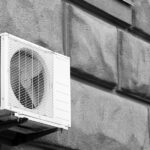
Improve Home Safety with Ventilation Services
Ensuring your home is a safe haven involves more than just sturdy locks and smoke detectors. Effective ventilation services play a crucial role in maintaining indoor air quality and reducing health risks associated with poor ventilation. From controlling humidity levels to preventing mold growth, investing in professional ventilation services is a proactive step towards a healthier living environment. In this article, we delve into the significance of ventilation for home safety, exploring its benefits and essential considerations for homeowners looking to enhance their indoor air quality effectively.
Benefits of Professional Ventilation Services
Ensuring optimal indoor air quality and a safe living environment often requires more than DIY solutions. Professional ventilation services offer specialized expertise and equipment to address specific air quality issues effectively. Here are four key benefits of opting for professional ventilation services:
- Expert Assessment and Custom Solutions: Professionals conduct thorough assessments to identify your home’s unique ventilation needs, offering tailored solutions that match your specific requirements.
- Effective Installation and Maintenance: Professional technicians ensure proper installation of ventilation systems, minimizing the risk of errors that could compromise air quality. They also provide ongoing maintenance to keep systems running efficiently.
- Compliance with Safety Standards: Professionals adhere to industry standards and regulations, ensuring that ventilation systems meet safety and performance guidelines for optimal indoor air quality.
- Long-Term Cost Savings: Investing in professional services can lead to long-term cost savings by reducing energy consumption through efficient ventilation systems and preventing costly repairs associated with poor indoor air quality.
Health Risks of Poor Ventilation
Poor ventilation in homes can pose significant health risks, impacting both physical well-being and overall comfort. One of the primary concerns of inadequate ventilation is the buildup of indoor pollutants such as volatile organic compounds (VOCs), formaldehyde, and other airborne particles. Without proper airflow to dilute and remove these pollutants, occupants may experience respiratory issues, headaches, allergies, and aggravated asthma symptoms.
Moreover, poor ventilation contributes to higher humidity levels, creating an ideal environment for mold and mildew growth. Exposure to mold spores can lead to respiratory infections, exacerbate allergies, and cause skin irritation. Inadequate ventilation also fails to effectively remove stale air and odors, leaving spaces feeling stuffy and uncomfortable. Addressing these risks requires implementing appropriate ventilation solutions to maintain optimal indoor air quality and safeguard the health and well-being of household occupants.
Signs Your Home Needs Ventilation Services
Recognizing the signs that your home requires ventilation services is crucial for maintaining a healthy indoor environment. Here are key indicators to watch for:
- Excessive Humidity: Persistent moisture buildup on windows, walls, or ceilings indicates poor ventilation, potentially leading to mold and mildew growth.
- Stale or Musty Odors: Lingering odors in bathrooms, kitchens, or basements suggest inadequate air circulation and ventilation, which can impact indoor air quality.
- Condensation Issues: Water droplets forming on windows or visible condensation on surfaces signal high humidity levels, indicating a need for improved ventilation.
- Allergy Symptoms: Increased allergy symptoms such as sneezing, coughing, or congestion may indicate a buildup of allergens due to insufficient ventilation and air filtration.
- Damp or Moldy Areas: Discovering mold or mildew in specific areas like bathrooms or basements indicates excessive moisture and poor ventilation, requiring immediate attention.
Types of Ventilation Systems
Understanding the different types of ventilation systems can help homeowners choose the most suitable option for their specific needs. Here are two common types:
Whole-House Ventilation Systems
Whole-house ventilation systems are designed to exchange air throughout the entire home continuously. They include:
- Exhaust Ventilation: Removes indoor air pollutants by exhausting stale air from the house, typically through vents in kitchens, bathrooms, and laundry rooms.
- Supply Ventilation: Brings fresh outdoor air into the home, distributed through ducts to various rooms, ensuring adequate airflow and reducing indoor pollutants.
Spot Ventilation Systems
Spot ventilation systems target specific areas or rooms where moisture and pollutants tend to accumulate, such as bathrooms and kitchens. Examples include:
- Exhaust Fans: Installed in bathrooms and kitchens to remove moisture, odors, and pollutants directly outside.
- Window Fans: Positioning fans to draw in fresh air or exhaust stale air from specific rooms, enhancing airflow and ventilation efficiency.
Choosing the Right Ventilation System
Choosing the right ventilation system for your home involves considering several key factors to ensure optimal indoor air quality and comfort. Begin by assessing your home’s layout and size to determine whether a whole-house ventilation system or spot ventilation solutions are more suitable. Whole-house systems, like exhaust and supply ventilation, are ideal for larger homes as they provide continuous air exchange throughout all living spaces, ensuring consistent airflow and pollutant removal.
Alternatively, spot ventilation systems, such as exhaust fans and window fans, target specific areas prone to moisture and odors, like bathrooms and kitchens. They offer localized airflow control, which can be more energy-efficient and cost-effective for smaller homes or areas with specific ventilation needs.
Additionally, consider the energy efficiency and maintenance requirements of each system to make an informed decision that aligns with your long-term comfort and budget goals. Consulting with HVAC professionals can provide further guidance on selecting the most effective ventilation solution tailored to your home’s unique requirements.
Installation Process of Ventilation Systems
Installing a ventilation system is a critical step toward improving indoor air quality and ensuring a healthy home environment. Here are key aspects of the installation process for ventilation systems:
- Initial Assessment: HVAC professionals begin with a thorough assessment of your home’s ventilation needs, considering factors such as layout, existing ductwork, and specific air quality concerns.
- System Selection: Based on the assessment, the appropriate ventilation system is selected, whether it’s a whole-house solution like exhaust or supply ventilation, or spot ventilation such as exhaust fans in bathrooms and kitchens.
- Professional Installation: Installation involves precise placement of vents, fans, and ductwork to maximize airflow and efficiency. Professionals ensure that all components are correctly installed and connected to power sources.
- Testing and Calibration: After installation, technicians conduct tests to ensure the system operates as intended. They may adjust airflow settings and perform calibration to optimize ventilation performance and energy efficiency.
- Client Training and Maintenance: Finally, homeowners receive training on system operation and maintenance to ensure ongoing performance. Regular maintenance, including filter changes and system inspections, is crucial for long-term reliability and effectiveness.
Improving Indoor Air Quality with Ventilation Services
Improving indoor air quality through effective ventilation services is essential for creating a healthier and more comfortable living environment. Proper ventilation helps remove indoor pollutants such as volatile organic compounds (VOCs), allergens, and excess moisture, which can accumulate and lead to respiratory issues and allergies. By continuously circulating fresh outdoor air and exhausting stale indoor air, ventilation systems reduce the concentration of pollutants and maintain optimal humidity levels, preventing mold and mildew growth.
Moreover, enhanced ventilation promotes better air circulation throughout the home, ensuring a more consistent and pleasant indoor atmosphere. Whether through whole-house ventilation systems or targeted spot ventilation solutions like exhaust fans in kitchens and bathrooms, investing in quality ventilation services can significantly improve the overall indoor air quality and well-being of your household.
Ventilation Services for Specific Rooms
Ventilation services tailored to specific rooms play a crucial role in addressing localized air quality concerns within your home. For areas prone to moisture buildup, such as bathrooms and kitchens, installing exhaust fans can effectively remove excess humidity and odors, preventing mold growth and enhancing comfort. These fans are strategically placed to ensure efficient airflow and pollutant extraction, improving overall air quality.
In addition to exhaust fans, rooms like basements or utility spaces may benefit from dedicated ventilation systems designed to circulate air and maintain appropriate humidity levels. By customizing ventilation solutions based on room-specific needs, homeowners can target problem areas effectively, ensuring every corner of their home enjoys fresh, clean air conducive to health and comfort.
Cost Considerations and ROI of Ventilation Services
When considering ventilation services for your home, it’s essential to weigh the initial costs against the long-term benefits and return on investment (ROI). The upfront investment typically includes the purchase and installation of ventilation systems, which can vary based on the type and complexity of the system chosen.
Whole-house ventilation systems may require more significant initial costs compared to spot ventilation solutions like exhaust fans. However, the ROI of ventilation services lies in improved indoor air quality, reduced energy consumption from efficient air circulation, and potential savings on health-related expenses due to better respiratory health.
Over time, these benefits can translate into lower utility bills and fewer maintenance costs associated with managing indoor pollutants and moisture. Consulting with HVAC professionals can provide insights into cost-effective ventilation options tailored to your home’s size, layout, and specific air quality needs, ensuring a sound investment in your family’s well-being and comfort.
Investing in professional ventilation services is a proactive step toward ensuring a safe and healthy home environment. At Cool Factory, Inc., we are committed to enhancing your indoor air quality through tailored ventilation solutions designed to meet your specific needs. Don’t compromise on your family’s well-being—contact us today at (703) 713-5113 to schedule a consultation.
Our expert team in Sterling, VA, is ready to assess your home, recommend the right ventilation system, and ensure efficient installation. Improve your home safety with Cool Factory’s reliable ventilation services and breathe easier knowing your indoor air is clean and fresh.






